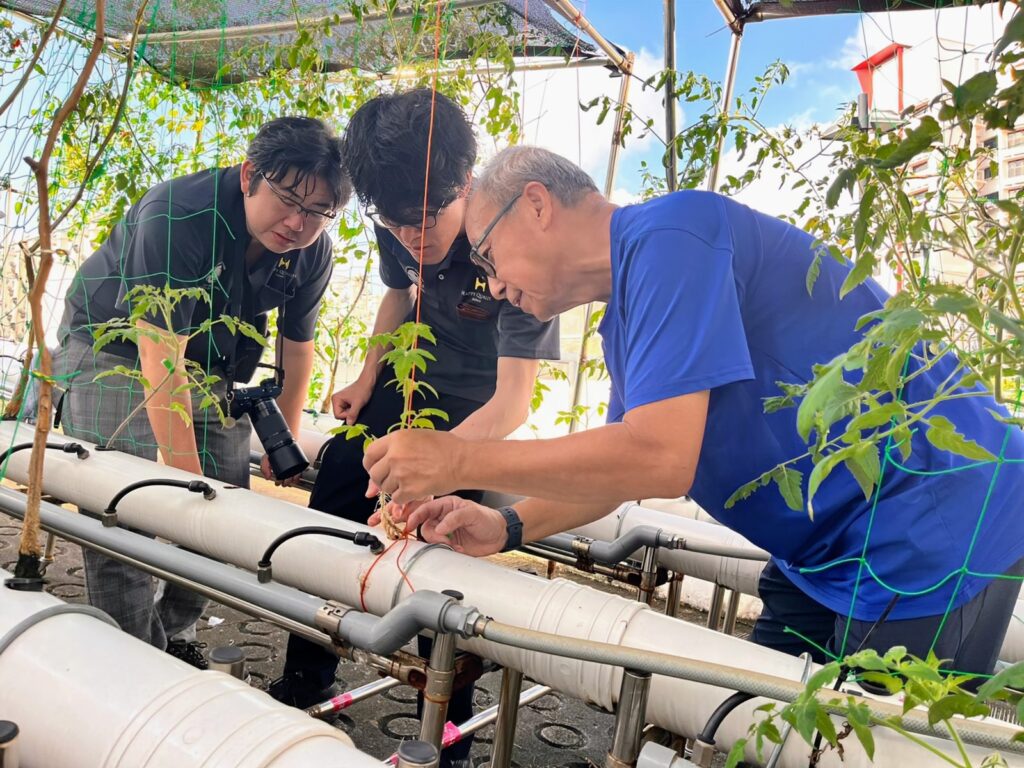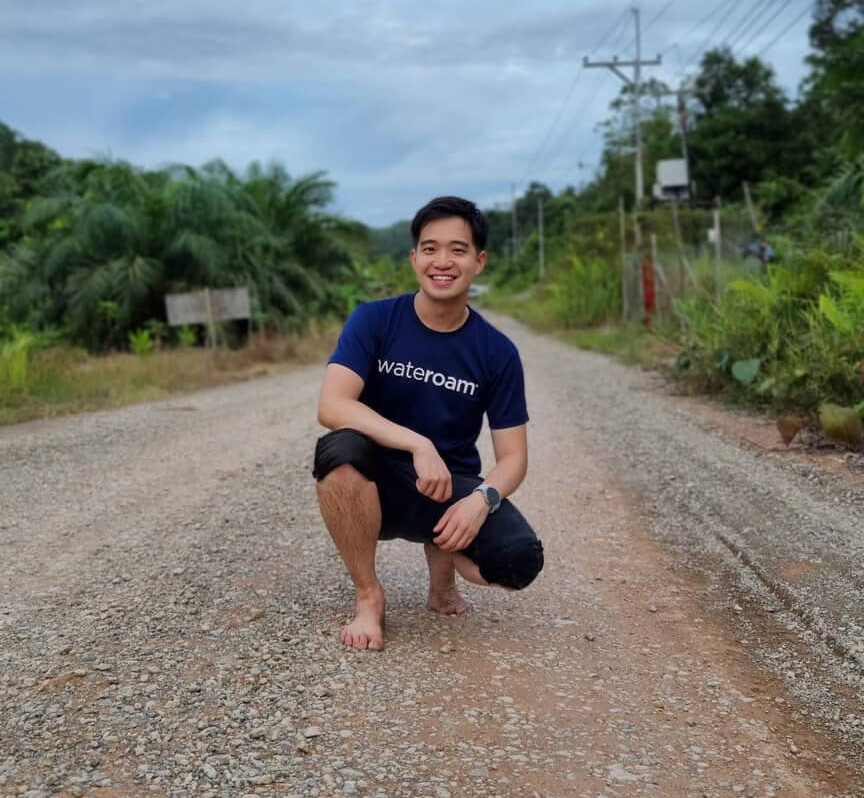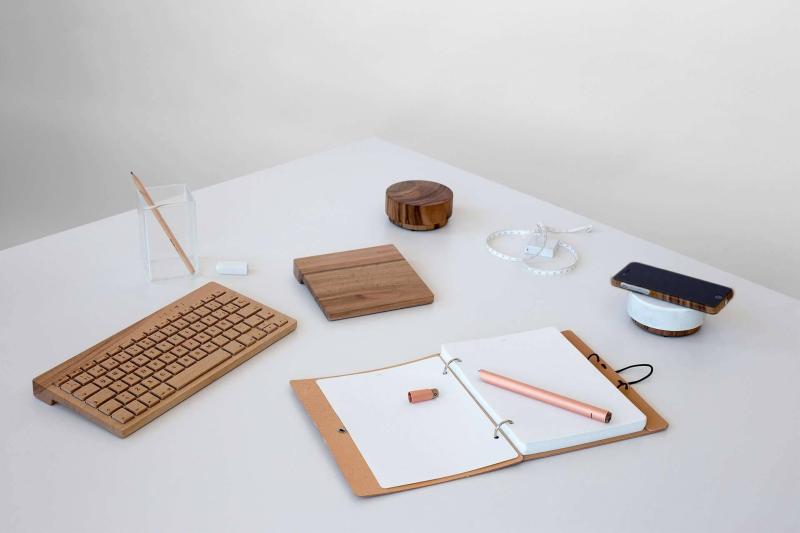Growing Beyond Boundaries: Webster Tham on Tomato Town’s Journey in Urban Farming Innovation
Interview By: Ophelia Zhu
Share This!
Webster Tham is the co-founder of Tomato Town, a company that specializes in vertical aeroponics system (VAS) to grow crops in small spaces with minimal maintenance while reducing resource consumption.
He overcame the challenges of starting a company during COVID and Tomato Town now sells vegetables to local supermarkets and restaurants across Singapore.
I’m curious to know: how did you get started with Tomato Town? What inspired you to start the company?
We started Tomato Town in 2021 during COVID: somebody [from Japan] reached out to say that there’s a technology to help with growing of crops, so we decided since there’s time on hand, why not try something different?
The [farming] system is pretty much low maintenance: [people] don’t have to do manual fertilising and watering – it’s all controlled by a centralized pool of water. They only have to do transplanting (move our seedlings from indoor to outdoors) and harvesting. Harvesting, at the end of the day, is still pretty much manual. You have to physically see whether the crop has pests or doesn’t have pests; that’s quite important in terms of quality control.
We tried [the technology] out on a smaller scale in City Sprouts, and from there we just modified our system according to what kind of needs, what kind of temperature, or what kind of crop can grow. Over time, we just kept modifying the system to somewhat suit Singapore’s climate, multi-story car parks, and whatnot: we increased the size of the tent and the size of the pipes to add more water to the system.
There’s not a system that you can just plug and play if you buy it from somewhere else. A lot of modifications is very important to help us keep the cost down and also to actually think of more innovative ways to actually help change the system to match what we have in Singapore.
I’m sure starting a company, especially during COVID, came with many obstacles. What were some challenges you faced and how did you deal with them?
For challenges we faced, at the start, space constraints were a big issue. We didn’t manage to get the multistory carpark space or the HDB carparks. We tried reaching out to rooftop farming companies, but a lot of them weren’t so receptive to the idea yet.
Even if they were receptive, there was a lot of red tape we had to maneuver because the infrastructure simply wasn’t what we needed. Water taps, electricity—they basically don’t have these amenities on the rooftops, and running new wires was quite daunting and expensive.
So, what we did was think of ways to adapt our system. We reduced the loading of the pumps and all, just so we could tap into the current electricity that was available. We changed a lot of things. Like I said, it was all about innovating and making what we have fit with what they already have in place.
Being among the first to actually do this, there was a lot of adapting that needed to be done. I think that’s the most important thing.
What has been some of the most rewarding experiences with Tomato Town thus far?
I think so far, one of the more rewarding experiences is probably working with Halfway Houses. We have a program where our farmers were previously in jail and are currently in halfway houses. They stay in [these houses] where they can actually interact with society and there is opportunity to go out to work.
We work with them, engage [with] them, and hire them to work at the farm. You can actually see their different life stories and whatnot, and I think that’s quite interesting.
We can also see how they make progress, fall back to their old ways, and make progress again. [What they experience] is actually similar to what we experience in farming: we make a mistake, we learn from it and then we progress. There’s a lot of trial and error in trying to find the right way to actually bring them back on track.
A lot of farmers that are in our rooftop farm right now, at least 60-70%, are from Halfway Houses, and we hired one as full time staff.

What role does community and collaboration play in your business model?
City Sprouts was very friendly in terms of giving us a space to actually try out new technology, which was an important start. [It was] a space to actually test out our technology to see whether we could actually reach that kind of harvest and that kind of yield that we actually wanted to get.
Only from there, we were confident in moving into a larger space so we wouldn’t throw in a large sum of money to get the infrastructure set up. City Sprouts actually provided the space with already made infrastructure, so we didn’t have to put additional cost into that. We used [the money] to actually put into the system, to actually improve the system to a point whereby we were confident enough to actually bid for a larger space outside.
Then we so-called graduated from City Sprouts, but at the same time, we wanted to continue to keep the place going for the learning process for other start ups or for community and society. [It is helpful to have] more of a community space so people come, see, and learn about it.
How would you describe your relationship with other local farmers and especially other rooftop farms, such as Nature’s International Commodity and ComCrop, Citiponics?
I think it’s not so much competitive; it’s more collaborative. But at the end of the day, sometimes it’s quite difficult to collaborate, simply because the system and the design [of the companies] are totally different, so it’s very hard to have knowledge transfer.
Even if we were to share, we might use larger pipes and they might not use larger pipes–they might use a floating system [instead]. There’s not a one-size-fits-all kind of technology.
But that being said, we do collaborate on other things, like getting the same source of fertilizer.
When we were starting out, we collaborated by pooling together our resources. But as you start to scale, then collaboration starts to be a little bit difficult because our sites are no longer in common place, no longer in a community. What we can do is just share information.
I think right now, the competition that we really have is more of bringing the price down and trying to lower the cost of production, rather than a competition with other companies.
Do you anticipate urban farming as a viable large scale source of food in the future? How does Tomato Town play a role in the future and what is next for Tomato Town?
I think that’s something that’s very viable: there’s a lot of untapped spaces in multi-storey car parks or even rooftops that we can really use to grow. If the rooftop is huge enough, we can really easily produce close to a ton of vegetables every month. I think with so many rooftops in Singapore, we can actually do a lot more.
We are actually working with some farms in Korea and Japan. We plan to design a system that is purely suitable in Singapore climate. They will actually be coming over to work with us and Republic Poly to come out with a system whereby we can actually harvest and grow enough tomatoes on a larger scale.
From there, we will bring better quality tomatoes, selling them directly to restaurants. One of the goals that we have is to increase the GABA [content]; high-GABA fruits are actually very valuable in terms of providing nutrients.
We try to put our resources into really growing in terms of quantity and quality. [We’re] typically more of a traditional farmer in that sense, using technology to help push out the produce [and] match whatever price that the locals are buying from Malaysia or from other cheaper sources. By increasing our economics of scale, then we can only reach that kind of pricing that the locals and consumers will desire.
It’s not simply just getting some technology at a few million dollars and hoping that it will work; it’s more about having [a technology that’s reasonably priced] and then slowly changing some of the existing technology to match your current environment. Then that will be something more sustainable.

Do you have any words of wisdom to people interested in sustainability?
Try!
Let’s say you have an idea in mind. Pick a small spot or do a small scale project to make your idea become something that is much more tangible. From there, try to preach your idea to others and then you can actually start to see whether it’s something that you want to scale up.
If you were reincarnated as a plant, what would you be?
I think I would be kale. Surprisingly, they are a very resistant plant. If you let me choose, I would choose something to be resistant as well–in terms of climate, in terms of growing.
You can actually cut off some of their leaves and they continue to grow. And they keep growing higher and higher and you realise if you pluck off the bottom leaf, the plant just keeps growing taller and taller and taller.
Share This!
Read More


Speak with Us
Enquire with us if you would like to know more, or join hosted tours of our Vidacity spaces.
